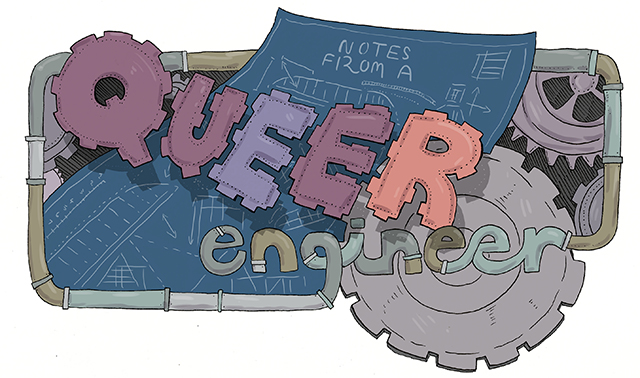
How To Blow Up A Planet And Other Highly Scientific “Star Wars” Theories
 Header by Rory Midhani
Header by Rory Midhani
Feature image by Shutterstock
I loved the new Star Wars film. Absolutely loved it. Sure, some people found the nostalgia pandering slightly annoying. (It personally didn’t bother me.) And yeah, okay, The Force Awakens was full of standard issue J.J. Abrams plot holes. (For example: Why was supposed sanitation worker FN-2187 suddenly given a blaster and sent into battle? Why didn’t Leia ever check R2D2 for Luke’s whereabouts? How did Resistance forces not notice that giant structure being built to harness the power of the sun and blow up planets?) But you guys. You guys! A female action hero protagonist!

Via Buzzfeed.
Female military leaders and advisors!

Via Cult Of Mac.
Adorable genderless robots!

Via Hitfix.
This movie wasn’t perfect by any means, but I sincerely adored it. Sitting in the dark with a bunch of strangers and watching multiple female X-wing pilots wander around Resistance hangers and do their thing in battle was beyond satisfying (especially knowing the history!). Captain Phasma didn’t get much screentime, but I kind of loved that she only appeared in heavy, salvaged chromium Stormtrooper armor; it gives me Samus Aran feelings. And Maz Kanata, just… did that really happen? I think I’m in love with a 1,000-year-old space pirate.
I’ve been reading quite a few fan theories and Poe/Finn pairings recently, but I won’t subject you to that (unless you want to talk in out in the comments, in which case, hello). Instead, I wanted to share with you some top notch nerd speculation on the science of Star Wars.
1. Neil deGrasse Tyson: How to Blow Up A Planet (Star Talk)
Related: Neil deGrasse Tyson explains what Star Wars gets right about science (Tech Insider). It’s not very much. But that’s not really the point.
2. How BB-8 Works
I love that these people built a whole website on the topic and took the time to 3D model BB-8 inside an X-Wing. Such dedication! Here’s a sample:
The first thing we have learnt from this patent is that there is a concept in robotics called holonomic motion. Ground-based holonomic robots are those who can instantaneously move in any direction on the horizontal plane. That makes them incredibly responsive. Both the Sphero and our little guy BB-8 are holonomic robots.
3. How Fast is the Millennium Falcon? A Thought Experiment. (Tor)
Lots of math to back up their analysis here!
This is where my attempt to deduce how fast the Falcon is runs into the barrier between fiction and reality, even though I’m already talking about a theoretical concept within a piece of fiction. George Lucas obviously didn’t have any underlying factual worldbuilding worked out when he wrote A New Hope and it’s clear that it was never his intent to do so. He wanted to tell a story about spiritual forces, empires and rebellions, daring fighter pilots, and hero’s journeys. Everything that could possibly call for a measured explanation, like a lightsaber, a space station the size of a moon, or the speed of the Millennium Falcon, was thought up in service of the spectacle of the Star Wars epic. The only explanation behind having Han establish “.5 past light speed” as the Falcon’s speed is that it makes Han sound cool. “.5″ is an arbitrary number and doesn’t signify a scale or speed.
4. Why Kylo Ren’s Lightsaber Works (Nerdist)
Related: Are Lightsabers Possible? (Gizmodo)
5. An Analysis of Blaster Fire in Star Wars (Wired)
Rhett Allain actually did a whole series on Star Wars science for Wired, but this blaster fire analysis one is my favorite. He also says that the physics doesn’t make a lot of sense (and it’s okay).
First, let me comment on the ground base’s blaster shots. The average for these things is just 34.9 m/s (78 mph). This is in the ballpark of a baseball pitch. Compare this to the speed of a Nerf gun bullet at about 10 m/s. This means two things:
-
A Jedi deflecting blaster bolts with a lightsaber is about the same as a baseball player hitting a pitched ball.
-
Playing with Nerf guns and plastic lightsabers in the backyard isn’t too terribly different than the movie.
6. Darth Vader: The Six-Million-Dollar Sith (Scientific American)
This article is actually an excerpt from The Science of Star Wars: An Astrophysicist’s Independent Examination of Space Travel, Aliens, Planets, and Robots as Portrayed in the Star Wars Films and Books by Jeanne Cavelos. It came out before the atrocities that were Episodes I-III, which is why he doesn’t have all the details on how Vader fell into that lava pit. I kind of wish I didn’t have all the details either, but here we are.
Quadriplegics who suffer from a similar problem use a ventilator attached through a hole in the neck to the trachea. This means air enters and leaves the body below the vocal cords, never passing over them. In a more sophisticated design, a speaking valve can be incorporated into the tube, which allows air through the tube into the lungs, but prevents air from leaving by the same path. Vader may have a similar ventilation device. This would explain why his breathing seems independent of his speech. A person’s voice with such a system can often be weak. Thus to project a commanding presence, Vader would need his voice augmented somehow.
I’m undecided whether The Force Awakens is enough to make up for I-III. Tentative yes? I guess it depends on whether they follow through on what has been set up so far.
Notes From A Queer Engineer is a recurring column with an expected periodicity of 14 days. The subject matter may not be explicitly queer, but the industrial engineer writing it sure is. This is a peek at the notes she’s been doodling in the margins.